Orange-bellied Snake – Gongylosoma baliodeirus, Non-Venomous
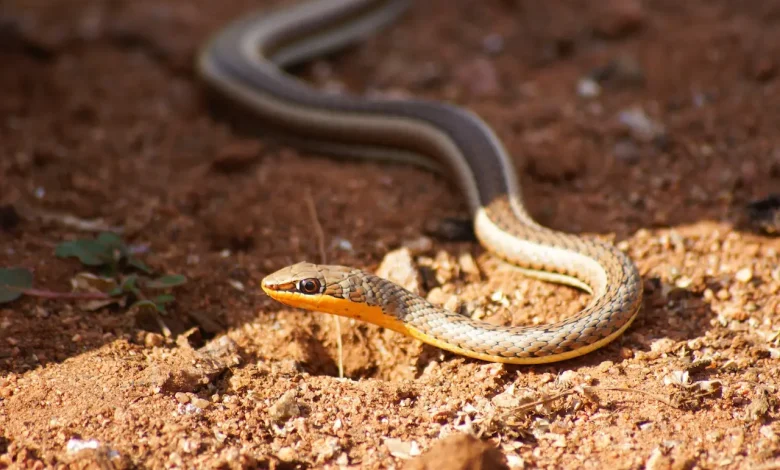
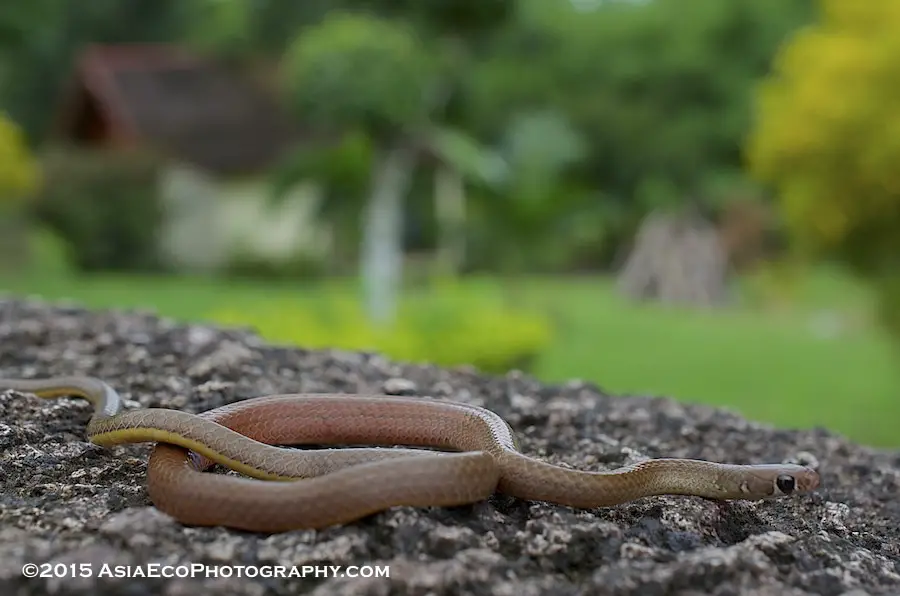
Gongylosoma baliodeirus or baliodeirum – Orange-bellied Snake, Orange-bellied Ringneck – งูสายทองลายแถบ
.
Length: We found them up to 40 cm.
Range: This beautiful snake is found in deep southern Thailand at the Malaysia border, Krabi province, and Southeastern Thailand. Other countries: Malaysia, Singapore, Brunei and Indonesia.
Habitat: Found in leaf litter at some elevation. We found two specimens, one at 100 meters and one at 470 meters above sea level. The first was found at night sleeping on a low branch of a small bush. The second was found in leaf litter near a very small stream. IUCNRedlist.org limits elevation to around 600 meters, some sources say up to 1,500 meters.
Active Time: The orange-bellied snake is diurnal.
Description: A small, very thin snake with a head indistinguishable from the body. The average adult size is probably 40 cm. There are multiple patterns on this snake, but generally, the top is brownish red and the ventral is cream-colored toward the head and bright yellow at the tail.
On the neck dorsal is one dark spot pair on opposite sides of the vertebral column. These extend to about the mid-body. The eye is very large for the head, larger even in comparison to Ptyas korros. The head pattern is intricate and the head is very small.
On the dorsal from the neck to mid-body are two dark red and thick stripes which merge near the tail and become one color, darker brown. There are also two dark lateral lines, one on each side, running the length of the snake. The anal shield is split. The tail ends abruptly in a nub.
Defensive Behavior: This snake wasn’t observed to be defensive, or even attempt to bite during rather extensive handling. When fleeing, the snake zig-zags very fast and every now and again attempts to jump with the front part of the body.
I thought I was getting this on video, but my finger had inadvertently hit the stop recording button. One thing I noticed with the most recently found snake was the nubby tail was waved around as if it was a head. This could possibly be a defensive behavior to lure predators toward the tail.
Food: Prey probably includes worms and small insects.
Danger: None.
Offspring: Nothing known.
Notes: There is very little information about this snake online despite exhaustive searches.
Scientific classification
Kingdom: Animalia
Phylum: Chordata
Class: Reptilia
Order: Squamata
Suborder: Serpentes
Family: Colubridae
Genus: Gongylosoma
Species: baliodeirus
Binomial name: Gongylosoma baliodeirus
I have also seen this snake called Gongylosoma baliodeirum and called the “striped ringneck” in the book, A Field Guide to the Reptiles of Thailand. The image they show for the snake is entirely different than the snake shown above. See the next image – a screenshot from my phone where I have the ebook.
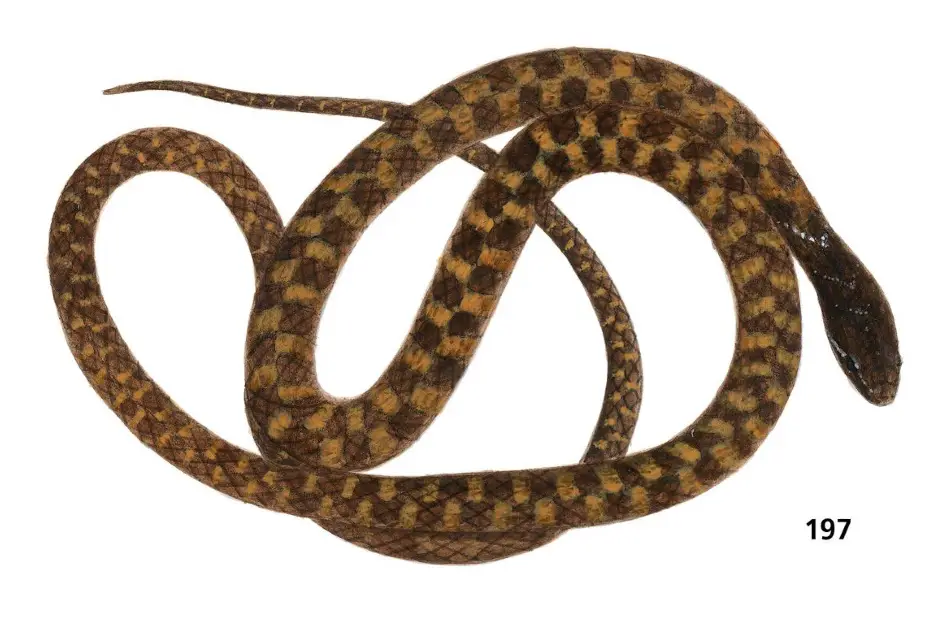
The snake is not covered at all in “A Photographic Guide to Snakes and Other Reptiles of Thailand and Southeast Asia.
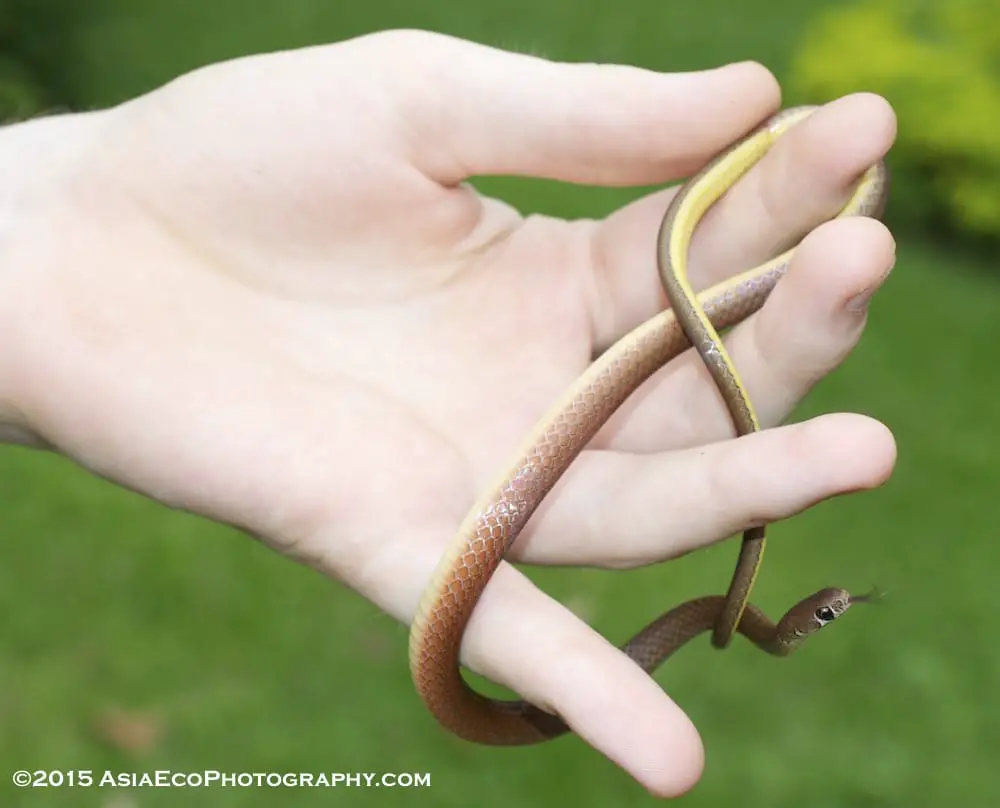
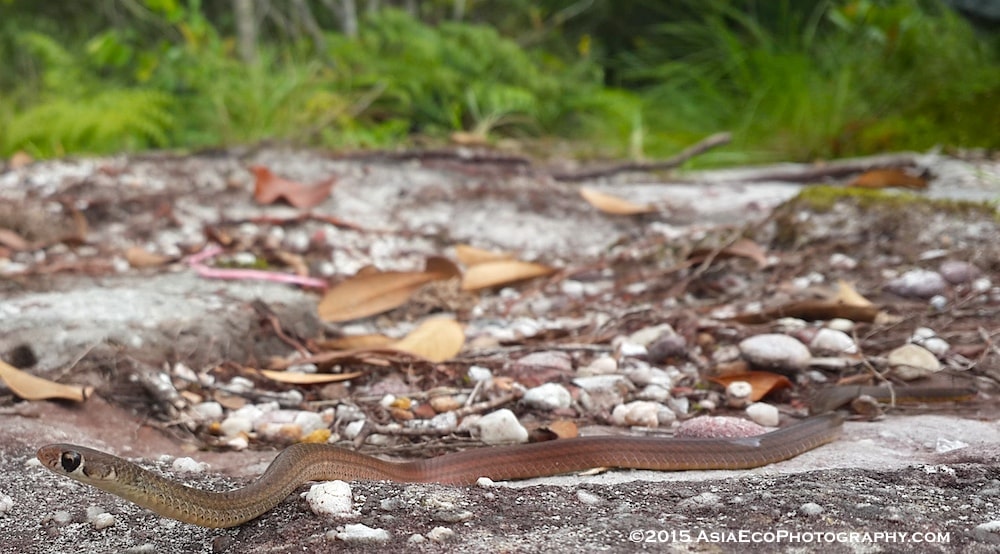

I met this snake in Bandung, Indonesia (elevation 700 m) in 1975. I took photos, did scale counts and photographed stomach contents, which looked like insect remains. Notes can be attached to emails to interested parties.
Nice. Send me photos by email if you would – on the CONTACT page. Cheers!